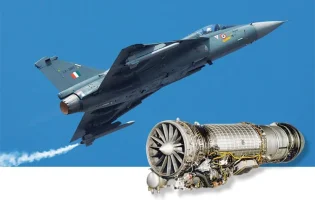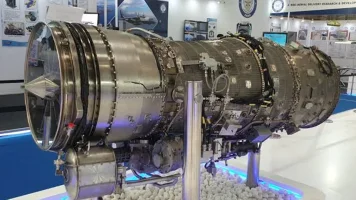- Views: 2K
- Replies: 17
The Gas Turbine Research Establishment (GTRE), a leading research organization under the Defence Research and Development Organisation (DRDO), has announced significant progress in the development of its Dry Kaveri Engine.
This engine, which shares 75% commonality with the original Kaveri engine, has overcome many of its predecessor's challenges and is now poised for integration into advanced defence platforms, including the Indian Air Force's (IAF) upcoming unmanned combat aerial vehicles (UCAVs).
GTRE has confirmed that the Dry Kaveri Engine has addressed all major issues that plagued the original Kaveri engine, resulting in a more reliable and efficient propulsion system. Rigorous testing has demonstrated the engine's capability to meet the demanding requirements of future defence platforms.
One of the key advancements in the Dry Kaveri is the development of a new, high distortion-capable fan. This fan is specifically designed to function with the serpentine air intake system required for the 13-ton RSPA (Remotely Piloted Strike Aircraft) program. This new design ensures optimal performance even under challenging flight conditions where airflow distortion could otherwise compromise engine efficiency.
The Dry Kaveri Engine is being specifically tailored for the 13-ton RSPA program, a next-generation UCAV being developed for the IAF. This UCAV is envisioned as a strategic bomber capable of conducting high-precision strikes on enemy targets. By integrating the Dry Kaveri Engine into the RSPA platform, GTRE and DRDO aim to provide the IAF with a reliable and indigenous propulsion system for its future UCAV fleet.
The development of the 13-ton RSPA is a key element of India's broader strategy to strengthen its air combat capabilities through autonomous and remotely piloted systems. The UCAV will not only enhance the IAF's precision strike capabilities but also provide critical operational flexibility, reducing the risk to human pilots in high-risk missions.
Furthermore, the serpentine air intake design, coupled with the new fan technology in the Dry Kaveri Engine, is crucial for maintaining the stealth characteristics of the RSPA. This design minimizes the radar cross-section of the engine intake, making the UCAV less detectable by enemy radar systems.
As the Dry Kaveri Engine undergoes further testing and integration, its eventual deployment in the 13-ton RSPA will be a significant milestone for India's defence industry. This achievement will not only enhance the operational readiness of the IAF but also serve as a testament to India's growing capabilities in defence innovation and unmanned systems development.



